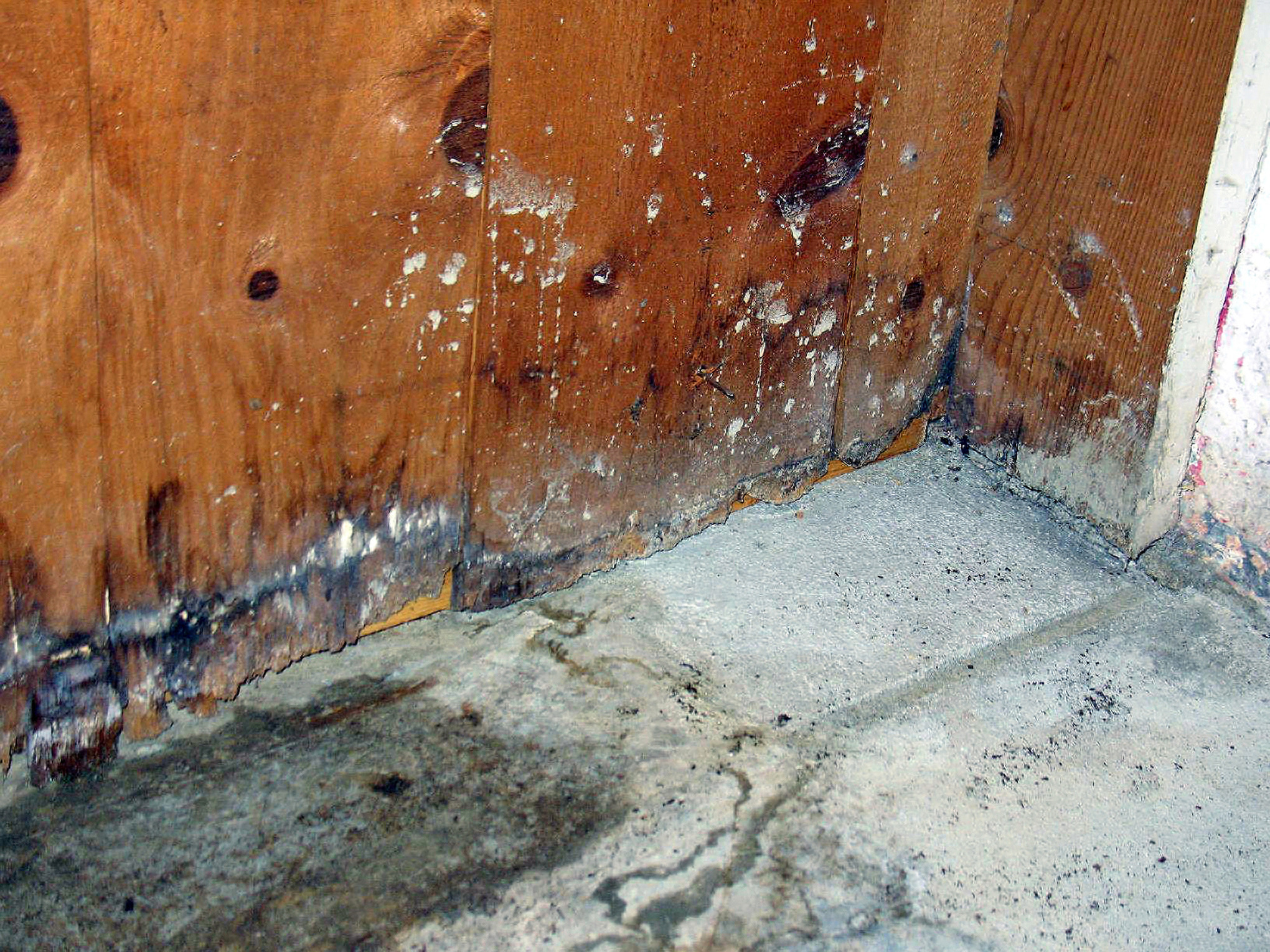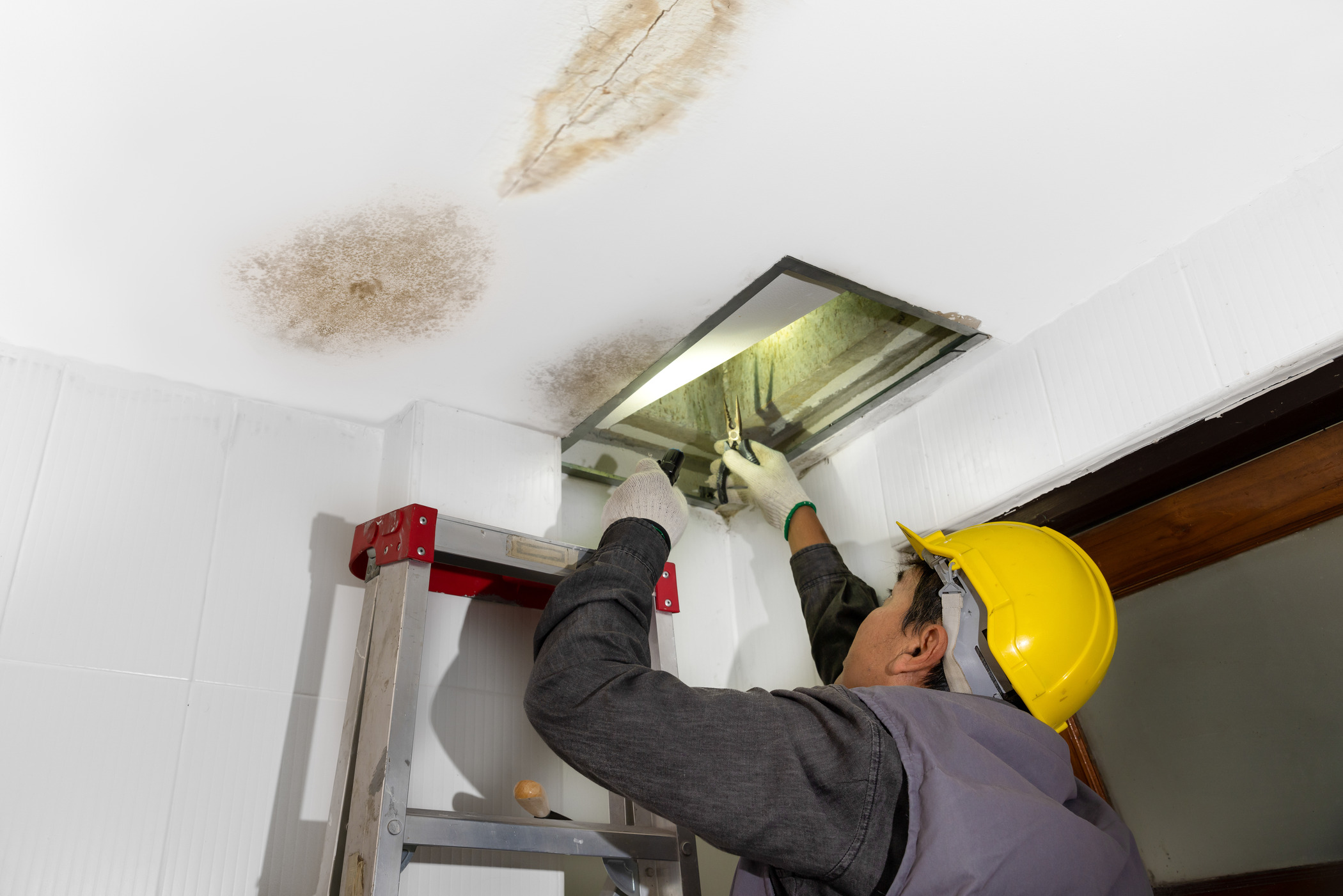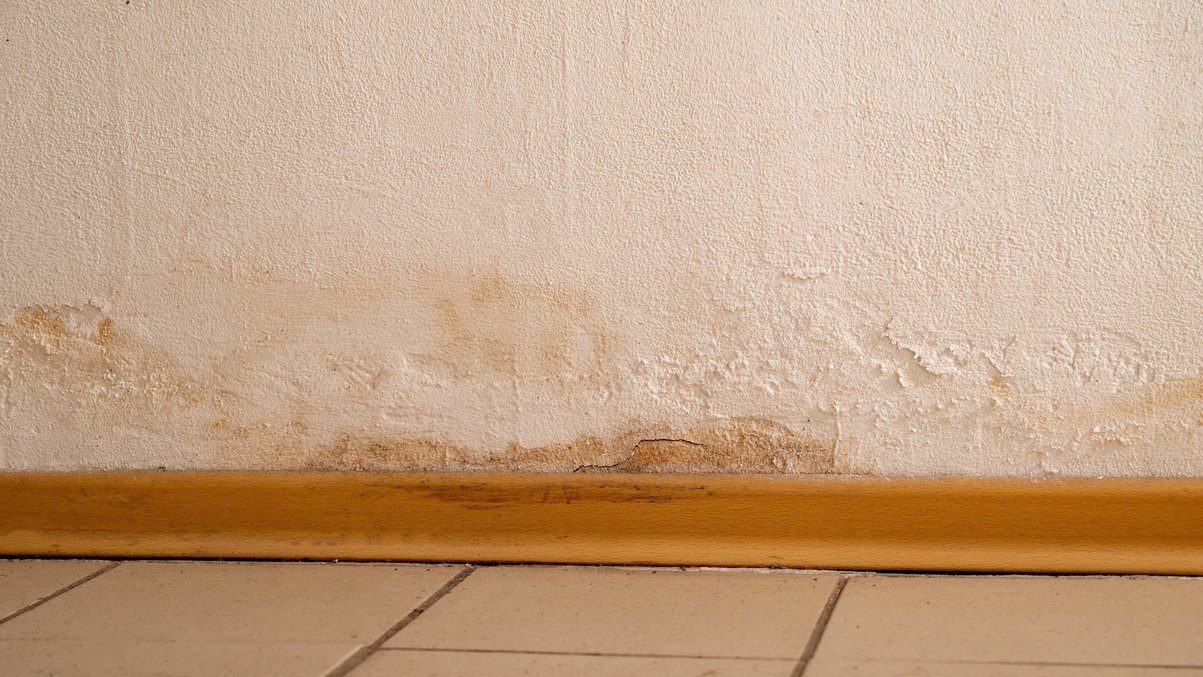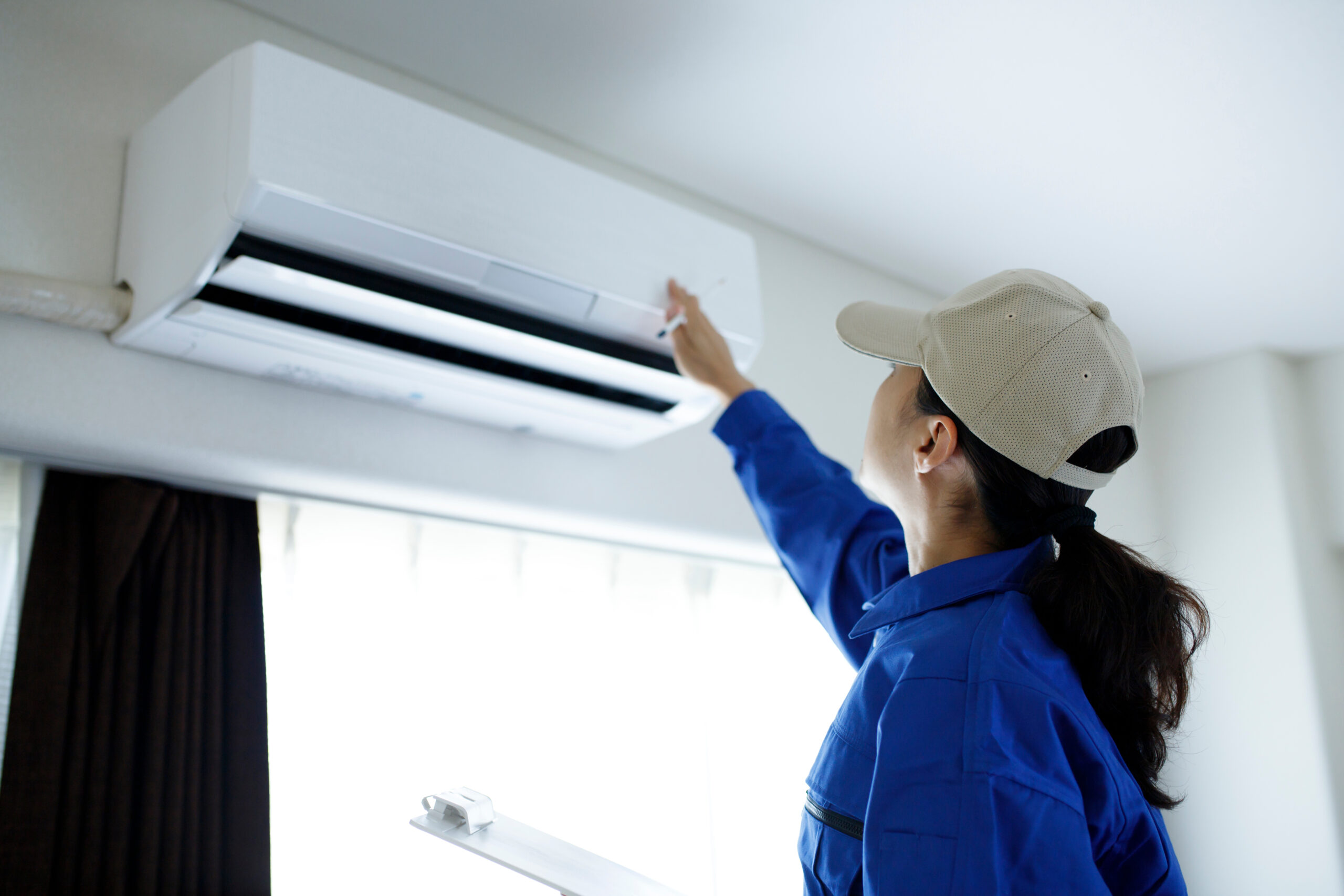
Discovering that water is leaking through your ceiling is one of life’s most unpleasant surprises. Ceiling water damage could be just a symptom of a more severe issue happening upstairs, in your attic, or to your roof. But no matter what is causing it, a water leak is never something to write off.
If the water damage to your ceiling is not addressed, it could lead to more significant problems than just a few unpleasant stains. In fact, it could lead to the growth of mold as well as irreversible harm to the structural integrity of your home.
This article will teach you how to recognize the telltale signs of ceiling leaks and take corrective action before you find yourself flooded with more severe damage.
Signs That Your Ceiling Is Leaking
You may be thinking that these would seem evident to any homeowner. After all, almost anyone would notice the most visible signs of a leak, like water dripping from the ceiling. But if you’re not actively looking for them, more subtle symptoms can be more challenging to spot. These foreshadowing signs include:
Rust-colored Spots or Streaks
The appearance of these marks on the ceiling is indicative of a water leak. It’s likely that if the source of the issue isn’t fixed, more leaks may spring forth in the future, which will increase the amount racked up by costly repairs due to water damage.
Wall and Ceiling Mold Growth
Mold grows in damp places where water leaks or where moisture otherwise gathers for other reasons. The formation of mold and mildew can begin in as little as 48 hours if a damp environment is present in the home. Mold can be any color, from white to green to black to even a pale pink or orange.
Wall, Door Frame, and Ceiling Swelling
When water collects in your home’s ceiling, doors, and walls, condensation forms. The wood and drywall used to build houses are extremely porous and therefore absorbent of moisture that collects around them, which causes these materials to swell when exposed to condensation.
Water may leak or bead on walls and ceilings, doors may bulge and not close properly, and surfaces may become awkwardly bubbled.
Peeling Wallpaper, Trim, and Baseboards
Walls and ceilings expand due to too much moisture, as explained above, causing decorative pieces to come loose and buckle. You may find this curious if you notice the wallpaper or baseboards beginning to peel or dislodge from their original positions.
But it’s important to recognize that this is a sign of water being absorbed into the materials used to construct your home, and therefore there may be a leak to blame.
What To Do if Your Ceiling Is Leaking
Leaving leaks unchecked and unresolved could result in expensive water damage repairs to your property. If these symptoms sound familiar, it’s time to take action immediately. Fixing the leak as soon as possible also helps reduce the likelihood of further damage. Here are the steps that you should take:
- Find a way to hold the water: Gather a few watertight containers to use as catch basins. You can use a piece of old clothing or a towel to line the containers and keep the water from spilling out when it drips.
- Put your belongings out of harm’s way: Everything that could be damaged by water should be moved out of the way. If you can’t transfer it, cover it with something waterproof. Ideally, you would use plastic sheeting or a tarp, but a waterproof tent, shower curtain, or deflated kiddie pool would also work.
- Clean up the water from the floor: Your floor can deform or breed mold and mildew if water is not removed quickly enough. Use an old mop or some towels to soak it up. You can clean large pools of water with a wet/dry vacuum, however, this should not be done with a typical household vacuum cleaner. A household vacuum not built to suck up water could short out your vacuum or even lead to an electrical fire. Check your vacuum cleaner’s instruction manual before using it for this purpose.
- Drill a drainage hole: Set a big bucket under the dripping area of the ceiling. You can use a screwdriver or drill to create a small hole. This stops the water from accumulating, reducing the risk of your ceiling collapsing.
- Locate the source of the leak: If it hasn’t rained recently, it’s possible that the water isn’t coming from a roof leak. However, many other things could be the source of the water leaking from your ceiling. If you suspect a plumbing issue is at the root of the leak, shutting off the main water supply will prevent further leaks until a plumber can fix the problem. That being said, roof damage is often to blame for leaking ceilings. Remember that fixing a roof is a complicated job and may require the help or service of an expert.
- Get expert assistance: A small leak in the ceiling can cause a lot of problems. After you have stopped the dripping, you should contact an experienced plumber and a home water damage restoration company.
Related Article: How To Handle Water Damage In Your Home
The Bottom Line
Leaks in the ceiling are usually symptoms of a more serious issue. Ignoring the problem increases the risk of damage and the likelihood that essential structural components will deteriorate.
Rescue One Restoration is the company you should call when you have water damage due to a leaky ceiling. Our service technicians are IICRC-trained and certified to repair any ceiling leak and quickly get your house back in shape.
Don’t put off fixing the ceiling water damage that’s endangering the structural integrity of your home.
Call us at (808) 745-1608 for emergency services or to set up an appointment. Or, you may submit your service inquiry through the “Request Service” form.
Thank you, and we look forward to serving you!
Related Articles:
Detecting Water Leaks Behind Walls
Top Signs Of Water Damage In Your Home
Places To Check For Water Damage
Learn more about our ceiling water damage restoration services and how Rescue One Restoration can serve you here.

The Hidden Dangers Of Home Water Damage: Why Immediate Restoration Matters Water damage in your home can be very dangerous. What seems like a minor issue at first glance can lead to significant long-term consequences. Left untreated, water damage can cause severe problems, from potential structural issues to the growth

Understanding Insurance Coverage For Damage Restoration In Hawaii With its stunning natural beauty and idyllic climate, living in Hawaii can feel like a dream come true. However, the state’s unique geographical challenges, including its vulnerability to natural disasters like hurricanes, volcanic eruptions, and flooding, can turn that dream into a

The Ultimate Guide To Water Damage Restoration In Hawaii: What You Need To Know Water damage is a common issue faced by homeowners and businesses alike, especially in a place like Hawaii, where tropical storms and hurricanes can wreak havoc. When faced with water damage, it’s crucial to act swiftly

Many homeowners aren’t sure if they need to replace their drywall after water damage. Even a tiny amount of water can cause significant problems for your drywall, and if not fixed quickly, the damage can worsen over time. We’re here to help you answer the question: does wet drywall always

Mold can grow on nearly any surface around your home. In particular, mold thrives on surfaces that are damp, cold, or both. This means many of your household appliances can be potential breeding grounds for mold and mildew growth. It is also important to conduct regular checks and cleaning to


